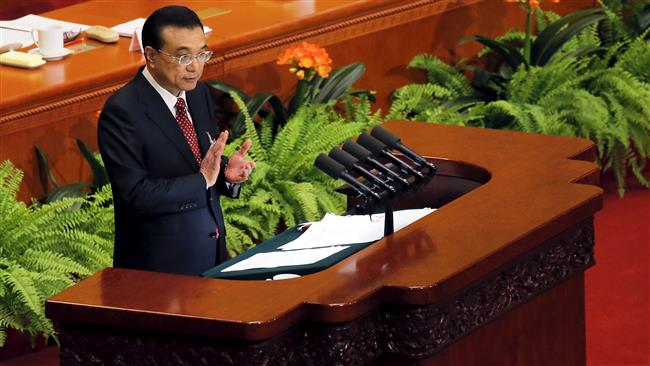China sets growth rate of 6.5% to 7%

China has set economic growth rate of between 6.5% to 7% for 2016 amid concerns that world’s second largest economy is slowing down.
This is the first time over the past 25 years that China sets a range for economic growth rather than a number, giving rise to the speculation that the Chinese authorities are reconsidering their adherence to hard-and-fast goals.
China is seen as the only major world economy that sets a hard annual growth target.
A growing number of economic experts have already called on Beijing to stop setting a growth target, saying it actually harms the economy and encourages officials to falsify data.
Chinese Prime Minister Li Keqiang declared that Beijing is set to push hard to create more jobs and restructure inefficient industries, saying the country should be prepared for “a tough battle.”
“Our country’s development faces more and greater difficulties, and severer challenges this year, so we must be prepared for a tough battle,” Li reiterated.
The Chinese premier also announced that Beijing will aim for an economic growth of 6.5% growth over the next 5 years.
Reforming stocks market
Beijing will also attempt to boost employment and restructure inefficient industries, said Li Keqiang, reassuring that the Chinese government will do its best to reform stock and bond markets.
“We will move forward with the reform of stock and bond markets and increase the level of rule of law in their development, promote the sound development of the multilevel capital market, and ensure that the proportion of direct financing is increased,” Li said ahead of the country’s annual meeting of parliament on Saturday.
Back in 2015, Chinese stock indexes crashed with the yuan sliding sharply against the dollar.
China’s stock markets have lost nearly half of their value since early June last year and have struggled to recover despite a massive and unprecedented rescue effort by the government and regulators. The plunge, along with China’s surprise devaluation of the yuan currency in August, roiled global financial markets and added to fears of a hard landing for the world’s second-largest economy.
But more recently, mainland stocks have rebounded roughly 10 percent from 14-month lows hit in late January, fueled by a global market recovery, central bank efforts to stabilize the yuan and hopes that Beijing will unveil more stimulus.
The rebound follows a typically bullish pattern ahead of an annual meeting of China’s top legislature, which starts on March 5, but traders say the thematic rebound could come to an end.







